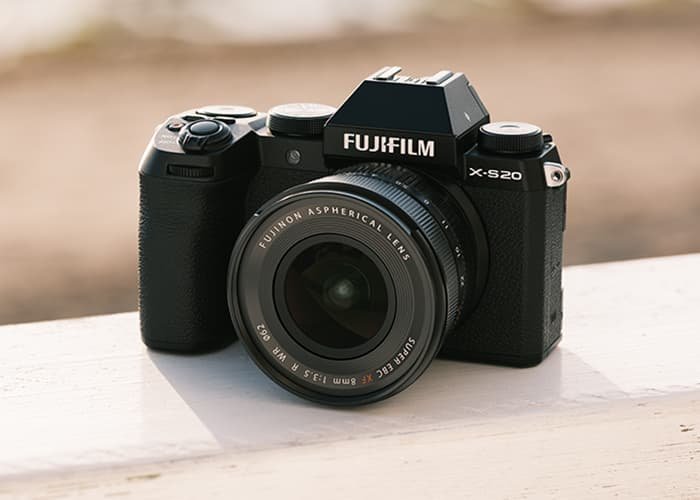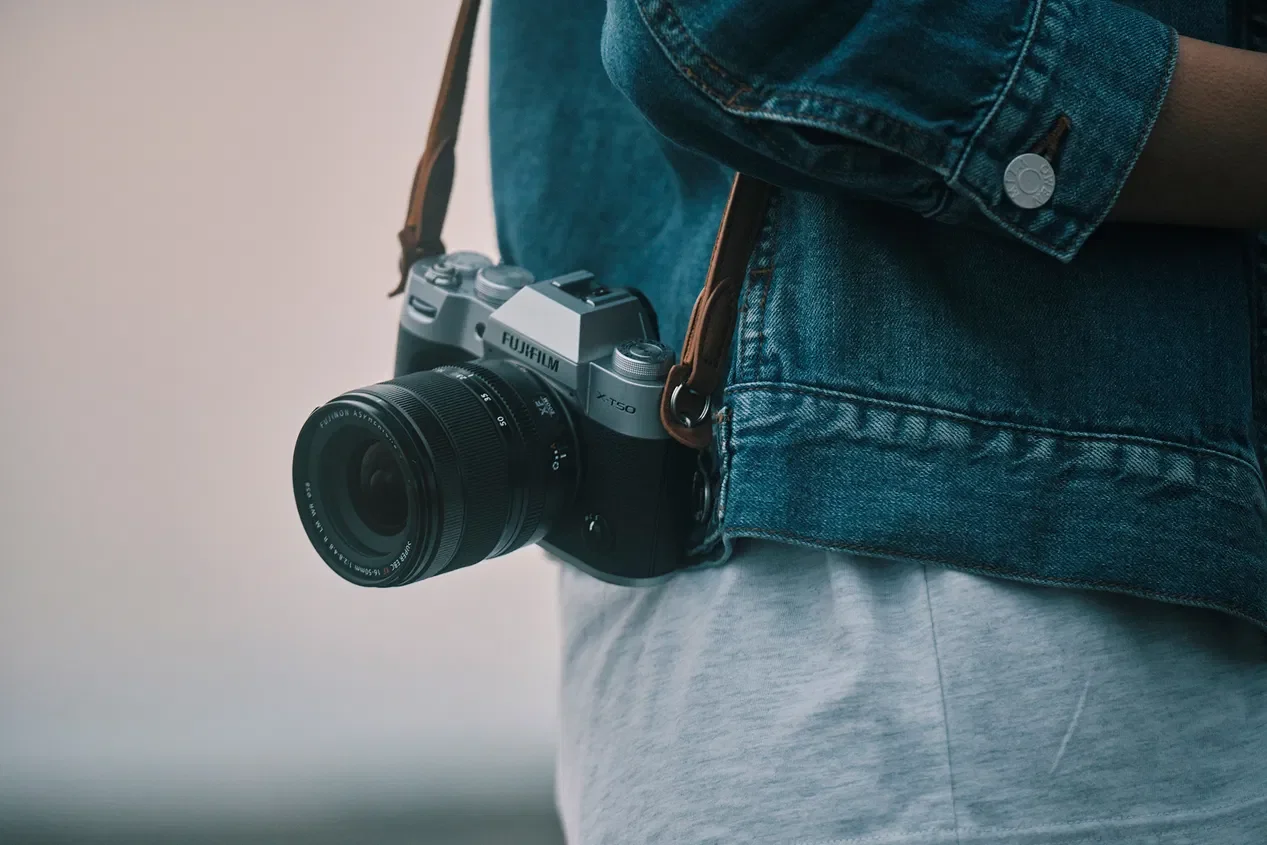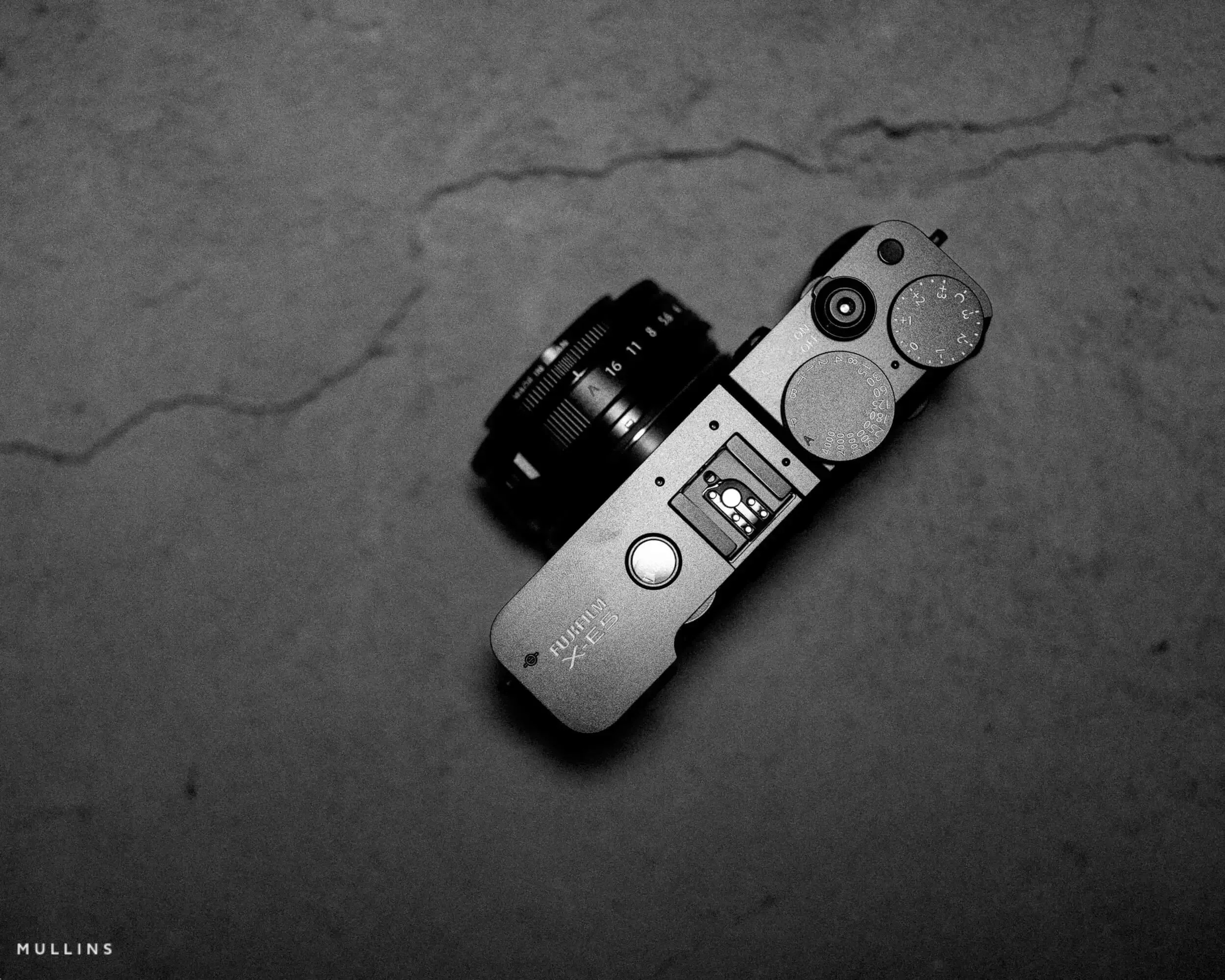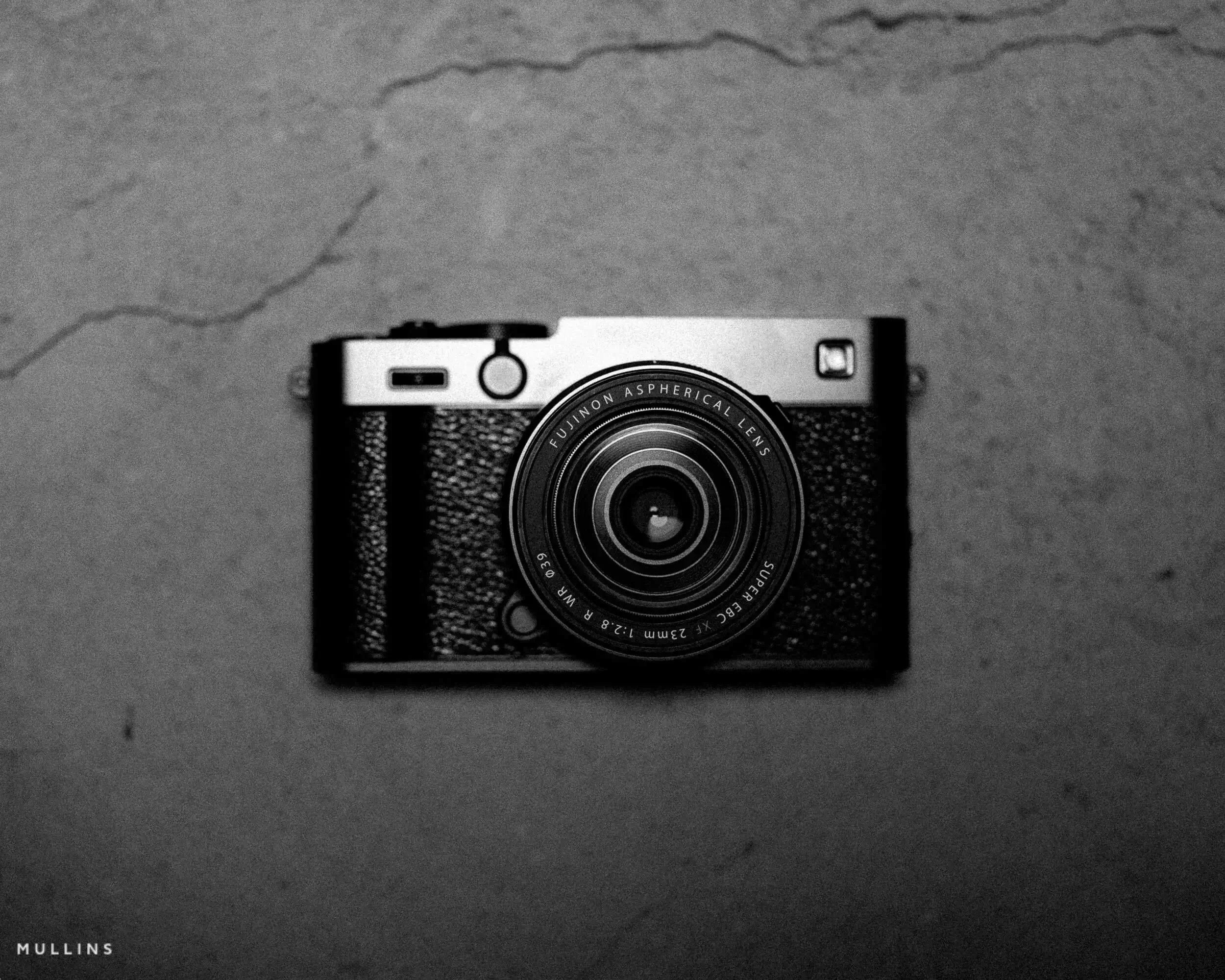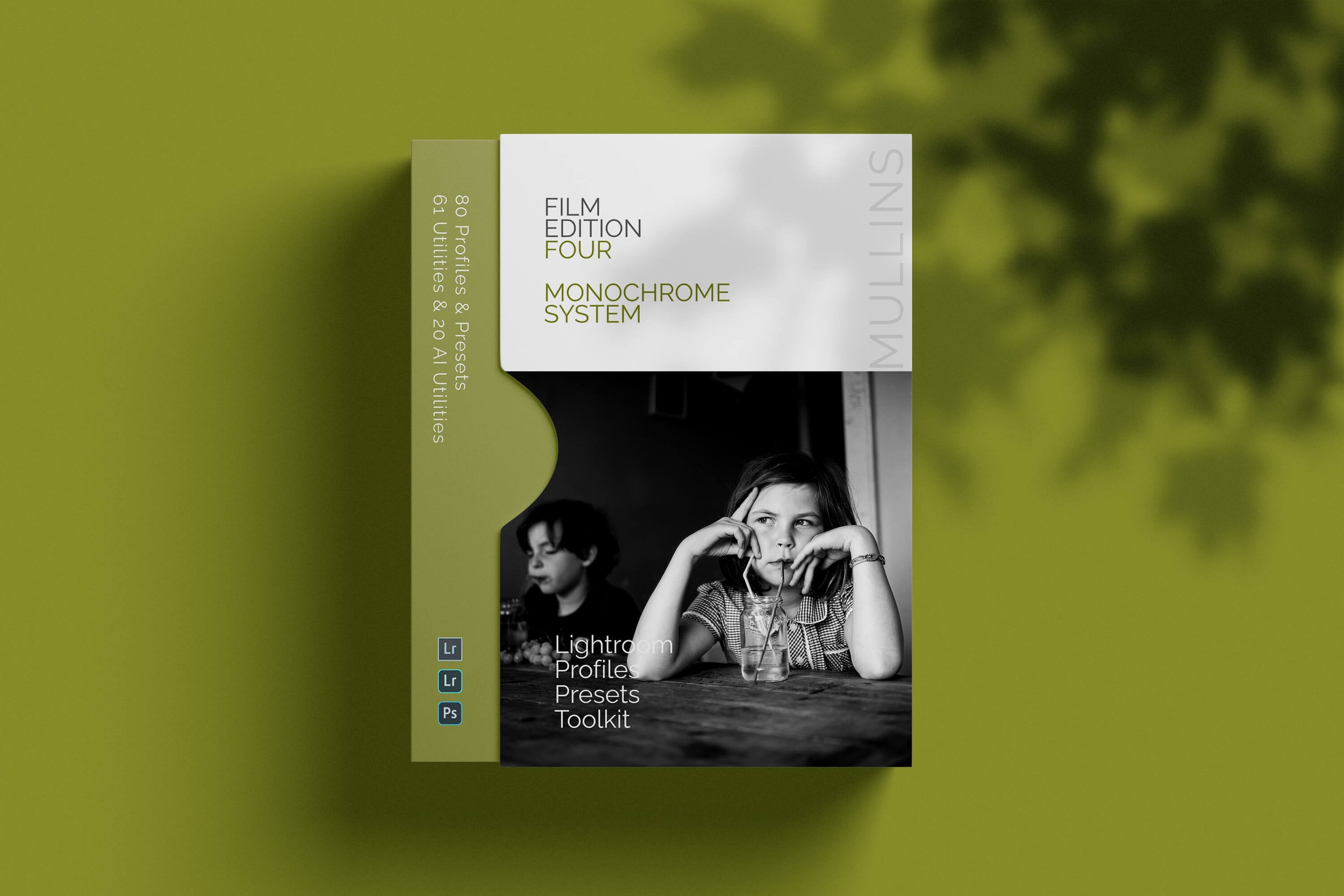Best Fujifilm Cameras for Beginners in 2026
As we head into 2026, if you are new to Fujifilm it is very easy to disappear down the rabbit hole of spec sheets, YouTube videos and forum debates. I get a steady stream of emails from people asking the same question in slightly different ways:
“Which Fujifilm camera should I buy first?”
This page is my honest attempt to answer that.
I am not going to list every camera Fujifilm makes. Instead, I am going to focus on a small group of current models that actually make sense for beginners, whether you are moving up from a phone or switching from an older DSLR.
We will look at budget, ease of use, how much “room to grow” each body gives you, and how they feel in the hand. All of the cameras here are available new, with typical UK pricing of roughly £1,500 or less for the body or a sensible starter kit at the time of writing.
Prices move around, so always check current deals, but this keeps things realistic.
At a glance: my top Fujifilm picks for beginners
If you just want the quick version, these are the cameras I would look at first.
Main recommendations
Fujifilm X-M5 – The smallest and most affordable way into the X Series. Great starter hybrid for everyday photos and video, usually sold in a good value kit with the XC 15–45mm lens.
Fujifilm X-T30 III – Classic small “little SLR” shape with a new processor, film simulation dial and improved autofocus. A very friendly camera for family, travel and general use.
Fujifilm X-S20 – A brilliant all-rounder with a proper grip, in-body stabilisation and strong video features. Ideal if you care about YouTube, vlogging or streaming as well as stills.
Fujifilm X-T50 – Compact body with the same 40.2MP sensor and IBIS as Fujifilm’s higher-end cameras. Good choice if you want something you will not quickly outgrow.
Fujifilm X-E5 – Rangefinder-style body with 40.2MP, IBIS and a very modern autofocus system in a discreet shell. Lovely for street, travel and people who prefer a smaller camera.
You might also consider
Fujifilm X half – A fixed-lens, half-frame style camera that leans into film-like JPEGs, vertical storytelling and creative fun. Great for people who want more than a phone but do not care about interchangeable lenses.
Fujifilm X100VI – A premium fixed-lens camera that sits above a typical beginner budget, but it is a beautiful “one camera” solution if you can stretch. 40.2MP sensor, IBIS and that lovely 23mm f/2 lens.
This article is part of my Fujifilm Learning Hub.
A growing collection of real-world guides, camera setup tips, lens suggestions by use-case, practical assignments, and buying advice with examples.
Prefer to see everything I write—brand-agnostic pieces on documentary & street work, reviews, tips, and the business of photography? Browse Main Articles & More.
Quick Comparison Table
You can use this table as a starting point, then read the sections below for more detail.
| Camera | Sensor / IBIS | Lens options | Approx. new price* | Best for |
|---|---|---|---|---|
| FUJIFILM X-M5 | 26.1MP APS-C, no IBIS | XC 15–45mm kit and full XF lens range | From around £900 with kit | Everyday use, holidays, first “proper” hybrid camera |
| FUJIFILM X-T30 III | 26.1MP APS-C, no IBIS | XC 13–33mm kit and full XF lens range | From around £1,000 with kit | Travel, family photography, compact all-rounder |
| FUJIFILM X-S20 | 26.1MP APS-C, 5-axis IBIS | XC 15–45mm or XF 16–50mm kits | From around £1,250–£1,500 with kit | Stills and video, vlogging, YouTube |
| FUJIFILM X-T50 | 40.2MP APS-C, 5-axis IBIS | XC 15–45mm or XF 16–50mm kits | From around £1,300–£1,550 with kit | People who want room to grow into a serious system |
| FUJIFILM X-E5 | 40.2MP APS-C, 5-axis IBIS | Body only, pairs well with small primes or zooms | From around £1,300 body only | Street, travel, discreet everyday camera |
*Typical UK pricing at the time of writing. Retail prices and offers change regularly, so always check current deals.
I have kept this list to cameras that are normally available new at around £1,500 or less for a basic kit. Some bundles with higher-end lenses may creep over that figure.
A quick word on how I am looking at this
Two important things before we dive into individual bodies.
1. Who I have in mind
When I say “beginner” here, I am thinking of two groups:
People moving up from a phone or compact camera, who want their first “proper” camera.
People who have used cameras before, but are new to Fujifilm and want a straightforward place to start.
So this is not a list of “entry level only”. Some of these cameras are surprisingly capable and would be fine for fairly serious work as you grow.
2. Bodies, lenses and budget
If you are starting out, it is very tempting to blow the whole budget on the fanciest body. Personally, I would rather see you with a mid-range body, a decent kit zoom and a bit of money left for a spare battery, memory cards and maybe a small prime later.
Most of the cameras on this page:
Have sensible kit lens bundles.
Use Fujifilm’s X-mount, so you can add or upgrade lenses later.
Share a common film simulation system, which is a big part of the appeal.
If you are the sort of person who likes to dive into JPEG recipes and shooting straight-out-of-camera, you have picked the right brand.
A quick look at Fujifilm camera history.
If you would like to see where these beginner cameras sit in the bigger picture, I have a separate guide to the history of Fujifilm X and GFX cameras. It walks through the main generations and gives you some helpful context for the current line up.
How to choose your first Fujifilm camera
Before we get into the specific models, there are three useful questions to ask yourself.
What is your realistic budget?
Be honest with yourself about this.
If your ceiling is under £1,000, then something like the X-M5 with the XC 15–45mm kit lens makes a lot of sense.
If you can push closer to £1,500, that opens up options like the X-S20, X-T50 and X-E5 with better kit lenses or body-only purchases.
Remember that accessories matter. Memory cards, a spare battery and a small camera bag are not glamorous, but they are part of actually using the thing.
Still photos only, or stills and video?
If you mostly want to photograph family life, travel and daily scenes, any of these cameras will do that extremely well.
If you also want to:
Start a YouTube channel
Vlog
Stream or record longer videos
then stabilisation, battery life and video features become more important. In this list, the X-S20 and X-T50 lean more into that hybrid stills and video space.
How do you feel about size and handling?
This is the bit that is quite subjective.
Some people love a deeper grip and a more “DSLR-style” camera. Others prefer something slimmer and more discreet that does not draw attention.
X-S20 and X-T50 have more substantial grips.
X-M5 and X-T30 III are small but still fairly classic in shape.
X-E5 is the more rangefinder-style option, which many people love for street and travel.
If you can, go and hold one or two of these in a shop before you decide.
Keeping your Fujifilm camera up to date.
Fujifilm are very good at extending the life of their cameras with firmware updates. If you want to know what has changed and when, I keep a running Fujifilm firmware updates page with the latest versions for X and GFX bodies in one place.
The best Fujifilm cameras for beginners in 2026
Let us go through the five main cameras I would put on your shortlist.
Fujifilm X-M5 – small, approachable and surprisingly capable
The X-M5 is currently the lightest camera in the X-Series line-up. It is tiny, it is relatively affordable, and with the XC 15–45mm kit lens it is a very friendly first step into “proper” cameras.
You get:
A 26.1MP APS-C X-Trans sensor.
Fujifilm’s X-Processor 5, which helps with autofocus, subject detection and video.
Access to the full X-mount lens range if you decide to add primes later.
It is not trying to be a mini X-T5. It is trying to be a camera you actually carry, every day, without thinking about it too much.
Best for beginners who
Want a genuinely small camera that still feels like a “proper” camera.
Are upgrading from a phone and do not want a huge learning curve.
Like the idea of good quality video being there if they need it, but are not buying a dedicated video rig.
Things to keep in mind
There is no in-body stabilisation, so you rely on lens stabilisation and decent shutter speeds.
Handling is intentionally simple. If you love a body covered in dials, you may prefer the X-T line.
Fujifilm X-T30 III – classic shape with modern gubbins
The X-T30 III is the latest version of Fujifilm’s classic small SLR-style body. It keeps the proven 26.1MP X-Trans CMOS 4 sensor but pairs it with the newer X-Processor 5, which brings better autofocus, more responsive performance and upgraded video, including 6.2K 30p.
The standout change is the film simulation dial on the top plate. Instead of a traditional mode dial, you get a dial dedicated to Fujifilm’s film looks, with extra slots for your own recipes. For beginners who want to explore different looks without diving into menus, this is genuinely useful.
Most UK kits pair it with the new XC 13–33mm lens, which gives you a flexible range for family life, travel and general shooting.
Best for beginners who
Prefer the “viewfinder in the middle” look and feel of a small SLR.
Want a balance of size, price and performance.
Are more focused on photos than serious video work, but still want decent video in their back pocket.
Things to keep in mind
No IBIS, so it is not quite as forgiving in low light as the X-S20 or X-T50.
It is small, which is lovely with compact lenses, but big zooms can feel slightly front-heavy.
Fujifilm X-S20 – the all-round hybrid
The X-S20 is probably the most flexible camera in this list. It uses a 26MP X-Trans BSI sensor, has a solid 5-axis in-body stabilisation system rated up to 7 stops, and a big comfortable grip that many people prefer.
It is very much built with hybrid creators in mind:
Excellent stills quality.
6.2K and 4K video options.
In-body stabilisation that helps for both low-light stills and handheld video.
A large battery that lasts significantly longer than older Fuji bodies.
With the XC 15–45mm or XF 16–50mm kit lenses you have a great general-purpose setup. If you do later decide to buy better glass, the body will keep up.
Best for beginners who
Want one camera that can handle family photos, travel, YouTube, vlogging and a bit of everything.
Prefer a deeper grip and more “camera-shaped” body.
See themselves growing into video and do not want to upgrade again quickly.
Things to keep in mind
It is a little larger and heavier than the X-M5 and X-T30 III.
If you are absolutely certain you will never shoot video, you may not need everything it offers.
Fujifilm X-T50 – compact body with serious headroom
The X-T50 is in many ways a smaller, friendlier version of the X-T5. You get the 40.2MP X-Trans CMOS 5 HR sensor, the X-Processor 5 and in-body stabilisation rated up to around 7 stops in a relatively compact shell.
That 40MP sensor gives you:
Plenty of room for cropping and reframing.
The ability to make large prints as your photography improves.
The same basic image quality as Fujifilm’s higher-end bodies.
Kits with the XC 15–45mm keep the price closer to the beginner bracket. Kits with lenses like the XF 16–50mm cost more, but give you a more premium feel.
Best for beginners who
Are comfortable investing a bit more now to avoid upgrading the body too soon.
Want the latest sensor and stabilisation without jumping straight to an X-T5.
Like the X-T style body but prefer something smaller for everyday carry.
Things to keep in mind
40MP files are bigger, so you will want decent storage and a computer that is not ancient.
If you mostly share images on social media, you may never truly exploit the resolution, but it is nice to have.
Fujifilm X-E5 – discreet, powerful and very Fuji
The X-E5 is the rangefinder-style option in this list. It is slim, has the viewfinder on the left, and looks more like a classic camera than a modern mirrorless body. Underneath all that, though, it shares the same 40.2MP X-Trans CMOS 5 HR sensor and X-Processor 5 as cameras like the X-T50, X-T5 and X100VI, plus 5-axis in-body stabilisation.
It is sold body-only, which means you choose your own lens. Many people pair it with compact primes like the XF 27mm f/2.8 or XF 35mm f/2. But there is nothing stopping you putting a kit zoom on it if that suits your style.
Best for beginners who
Are drawn to street, documentary or travel photography.
Like the idea of a small, discreet camera that does not shout “professional”.
Are happy to think a little more about lens choice rather than living with a kit zoom forever.
Things to keep in mind
The body-only price is on the higher side for a first camera once you add a lens.
The grip is minimal. If you want a chunky handhold, the X-S20 or X-T50 will feel more secure.
Torn between the X-E5 and the X100VI?
If you are trying to decide between a small interchangeable lens body and a fixed lens camera, I have a detailed comparison: Fujifilm X-E5 vs X100VI. It looks at how they differ in real world use and which type of photographer each one suits.
You might also consider…
These two cameras are slightly different in character, but they are worth mentioning because beginners ask about them a lot.
Fujifilm X half – for playful, film-inspired shooting
The X half is not really a system camera at all, and that is kind of the point.
It uses a 1-inch sensor with around 17–18 megapixels and a fixed 32mm equivalent lens. It defaults to a vertical, half-frame style and leans heavily into film-inspired JPEGs, diptychs and a “Film Camera Mode” that hides your images until they are “developed” via the app.
There is no RAW, no interchangeable lenses and no pretence that this is a do-everything camera. It is aimed at people who want more than a phone, but who mainly want fun, nostalgic-feeling photography with minimal faff.
For the right person it is brilliant. For others it will feel limiting very quickly.
Fujifilm X100VI – if your budget stretches further
The X100VI sits above the rough £1,500 limit I set for this list, but in the real world a lot of beginners look at it, so it deserves a mention.
You get:
A 40.2MP X-Trans CMOS 5 HR sensor.
In-body stabilisation.
A 23mm f/2 fixed lens (roughly 35mm equivalent).
A hybrid optical / electronic viewfinder.
Lovely film simulations and very strong JPEGs straight out of camera.
If you like the idea of one camera and one lens, and you are happy to frame with your feet rather than changing focal length, it can be an amazing camera to live with. It is also a camera you are unlikely to “grow out of”, even if your skills progress a long way.
The trade-offs are simple:
You cannot change lenses.
It costs more than most of the other options here.
For some people the focal length will click instantly, for others it will feel a bit awkward at first.
If you do find yourself drawn strongly to the X100VI, it is worth seeing if you can borrow or rent one before committing, just to make sure the fixed lens suits you.
Trying different looks with presets
Once you are comfortable with the camera in your hands, you will probably start thinking more about how your photographs look rather than just whether they are sharp and correctly exposed. That is where presets can be useful.
I use Lightroom presets in my own work to keep things consistent and to experiment with different colour and monochrome looks without reinventing the wheel each time. If you are shooting RAW or JPEG from any modern camera system, presets can give you a fast way to try different styles and then refine the ones that feel like “you”.
If you are interested in exploring different looks for your images, I have a complete set of colour and black-and-white presets available.
They are designed to work with files from any camera brand, not just Fujifilm.
Want help with the editing side?
If you would like a head start with colour and black and white looks, my Lightroom preset collections are designed to work with RAW and JPEG files from any modern camera system, including Fujifilm.
A quick note for those with a bigger budget
If you already know that you want to take photography seriously, or you have one eye on potential professional work in the future, it is worth being aware of the Fujifilm X-T5.
It sits above the cameras in this list in terms of price, but it shares the same 40.2MP sensor as the X-T50 and X-E5, has excellent weather sealing, dual card slots and a more rugged body that is built with heavier use in mind. It is outside the scope of a straightforward beginner article, but it is a natural next step if you want to start at a more “pro-leaning” level from day one.
For most beginners, though, the cameras on this page are more than enough to learn on, enjoy and grow with.
Learning your camera and getting consistent results
Buying the right camera is only the first step. The next bit is where the fun starts.
Whatever you choose from this list, I would encourage you to:
Spend a bit of time learning how Fujifilm’s film simulations and JPEG settings work.
Set up a few simple, reliable “looks” that you actually like, and stick with them for a while.
Get comfortable with basic exposure, focus modes and how the camera behaves in different light.
Once you are happy with the camera in your hands, you can start worrying about extras like new lenses, presets, recipes and all the other fun stuff.
Final thoughts
If you have made it this far, you have probably realised that there is no single “right” answer to the question of which Fujifilm camera is best for beginners. Any of the bodies on this page will give you more than enough quality to make images you are proud of. The important bit is choosing the camera that feels comfortable in your hand and makes you want to go out and actually use it.
My advice is simple. Pick one that fits your budget, buy it with a sensible kit lens, and then spend your time learning how light works, how people behave and how the camera responds in different situations. That matters far more than whether you have 26 or 40 megapixels.
Fujifilm makes it easy to enjoy the process. The film simulations, JPEG recipes and tactile controls are there to encourage you to experiment and find a look that feels like yours. Once you have that, the camera becomes a tool rather than a distraction, and that is when your photography really starts to move in the right direction.
Frequently Asked Questions
-
Yes. Modern Fujifilm cameras are straightforward to use, especially if you start with a simple kit lens and spend a little time understanding the basics. The big advantage for beginners is the film simulation system and JPEG engine. You can get lovely images straight out of camera without needing to become a Lightroom expert on day one.
-
Most people are better off starting with a kit lens. The bundles that pair bodies like the X-M5, X-T30 III, X-S20 and X-T50 with XC or XF zooms are usually good value and give you a flexible focal range for everyday shooting. You can always add primes later once you have a feel for what you like to photograph.
-
IBIS is nice to have, especially in low light and for video, but it is not absolutely essential. Cameras like the X-S20, X-T50 and X-E5 do have IBIS, which helps you get sharper handheld shots at slower shutter speeds. Cameras like the X-M5 and X-T30 III rely on lens stabilisation and good technique instead. If you know you want to shoot a lot of handheld video, I would lean towards one of the IBIS bodies.
-
Not really, but you do not need it either. The 26MP cameras already have more than enough resolution for prints, social media and general use. The 40MP bodies give you extra cropping flexibility and more headroom for large prints, but they also produce larger files. If budget is tight, I would not stress too much about chasing the higher resolution straight away.
-
This article focuses on new bodies, because availability and pricing are easier to compare. The used market for Fujifilm is strong, and you can absolutely get great deals on older cameras. The main advantage of buying new is warranty, peace of mind and the fact you are getting the latest autofocus, processor and video features. If you are comfortable buying used, it is a valid way to stretch your budget further.
Some of the product images on this page are official Fujifilm press images and are reproduced here with permission from Fujifilm.








